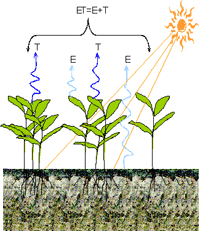Agricultural Research Division of IANR

West Central Research and Extension Center, North Platte
Date of this Version
10-2015
Citation
Frontiers in Ecology and the Environment 13:8 (Oct 2015), pp. 450-451. doi: 10.1890/1540-9295-13.8.450.
Abstract
In 2012, much of the US Midwest was gripped in one of the most severe droughts on record. While conducting experimental fieldwork at a site in Nebraska during June of that year, I noticed a single musk thistle (Carduus nutans; Figure 1) that appeared to be in the bolt or early flowering stage, which is typical for the species at that time. Here, however, two things were unusual: this plant was less than 1 meter tall (with adequate moisture and light, musk thistle typically grows to heights of 1–2.5 meters before flowering), and was only 3 months old (the bolt stage, when it would produce a flowering stem and set seed, typically occurs during the thistle’s second year). Interestingly, this plant died less than 3 weeks later, without producing flowers or seeds. Apparently, this plant was unable to successfully spearhead an invasion in this field because it could not complete its normal life cycle during a period of drought.
Included in
Biodiversity Commons, Plant Biology Commons, Terrestrial and Aquatic Ecology Commons, Weed Science Commons


Comments
Copyright 2015 The Ecological Society of America. Used by permission.